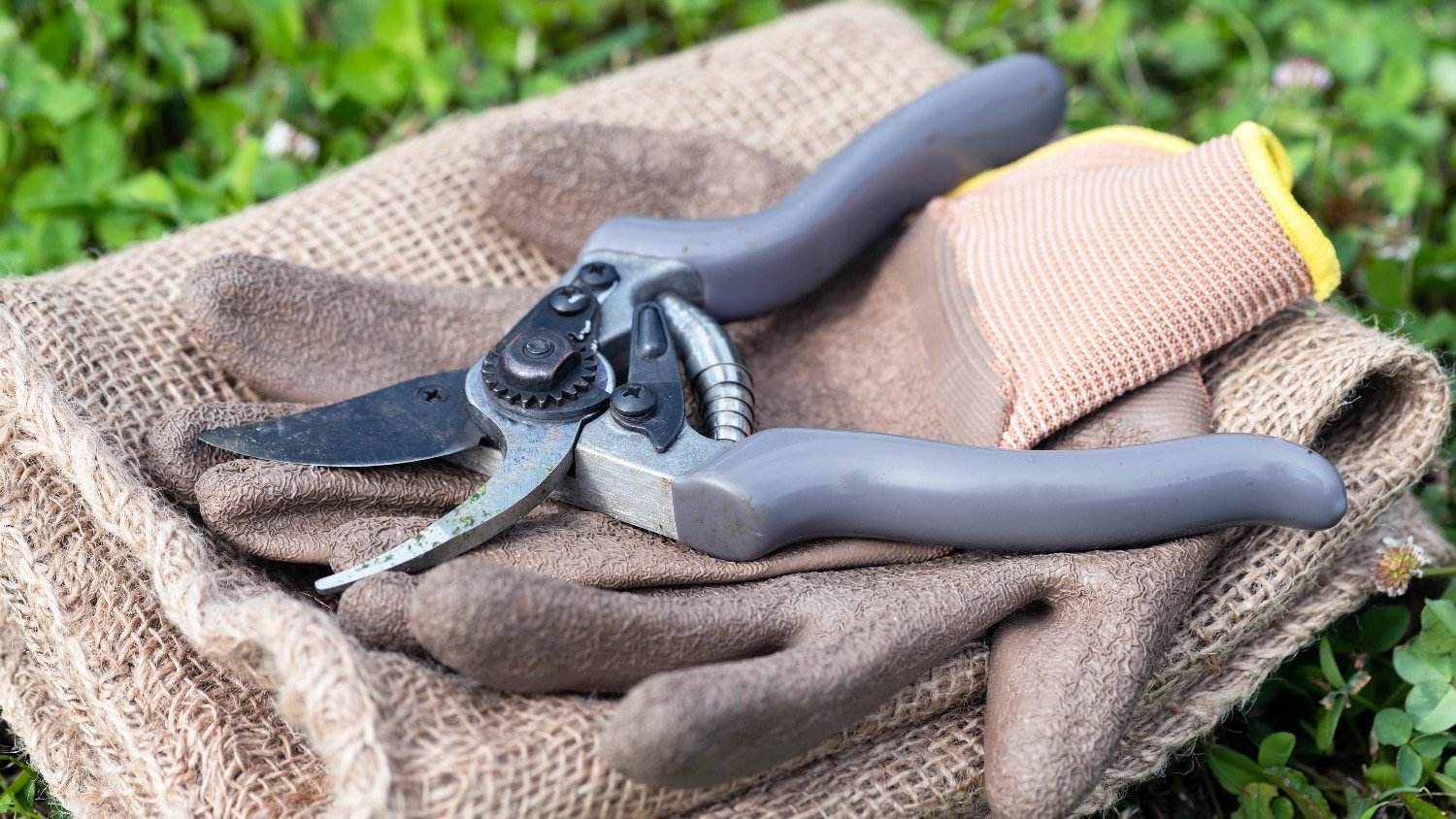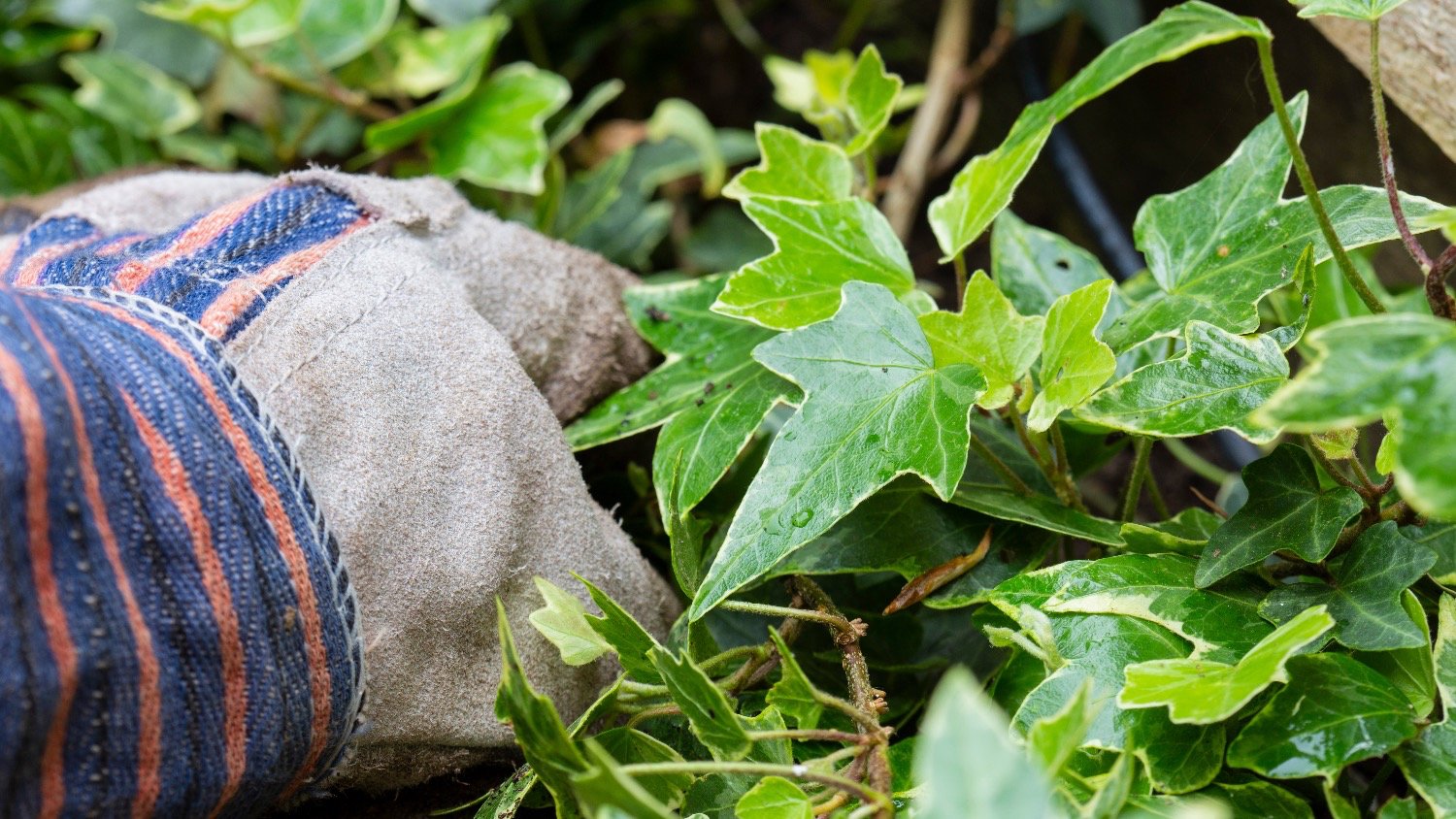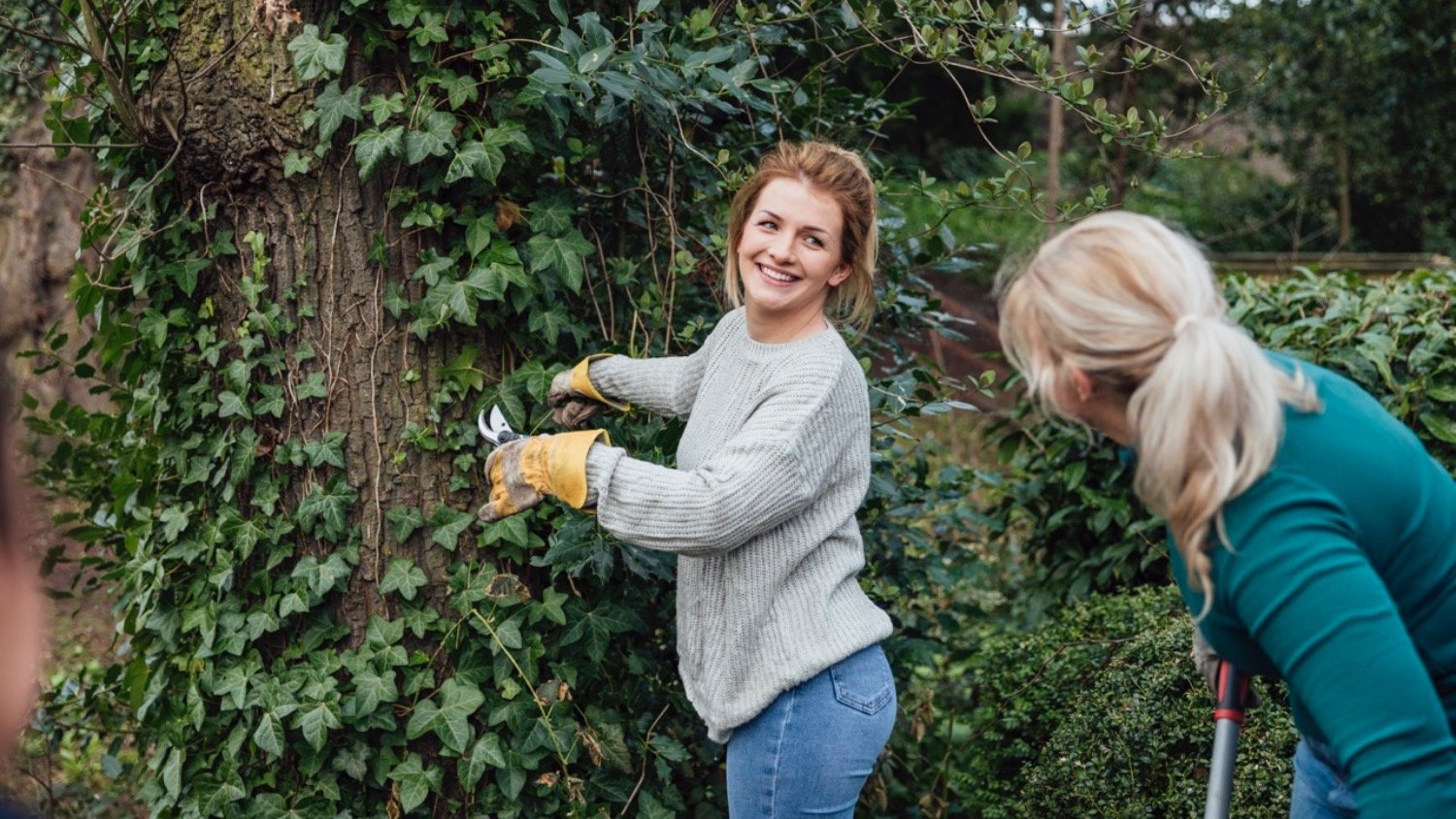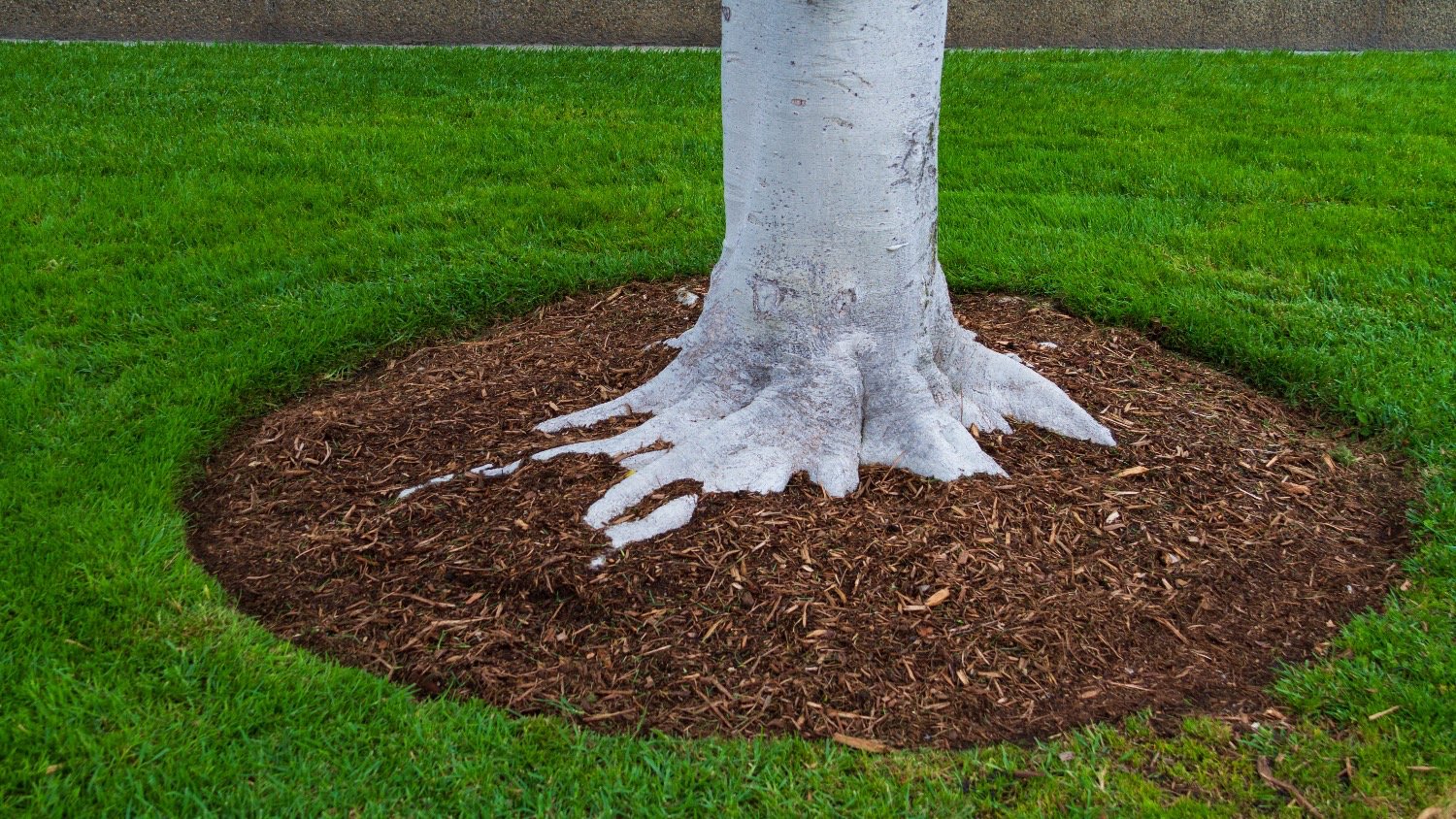
Trimming your bushes is one of the less costly aspects of landscaping, and it’s helpful to bundle many trimming services together to save money.
Skip a rash decision—handle ivy the right way


While ivy climbing your trees can seem charming, it can pose a serious risk to the health of your tree and surrounding plants. Luckily, you can learn how to kill ivy on a tree yourself in just a few hours or hire a local tree maintenance pro instead. You can kill ivy on trees by cutting them at the root and applying herbicide. Use our DIY guide to learn how to kill ivy on trees and keep it gone for good.
The amount of time it takes to kill ivy on a tree depends on the size of the tree and the amount of ivy there is to remove.
Safety goggles
Gloves
Garden clippers, loppers, or shears
Herbicide (formulated for killing ivy)

Before you get to work, be sure you and your area are prepped. Have your tools and herbicide ready to get rid of ivy fast.
Before diving into how to get rid of ivy on trees, you need to know the type you are dealing with first. There are a few different types of ivy that grow on trees. Although the removal method may be the same, some ivy types may be more difficult to remove than others. For example, English Ivy is among the most challenging to remove because it has an elaborate root system and grows rapidly.
You also need to be careful if you are dealing with poison ivy because coming in contact with it can cause blisters and itching, and some people have severe reactions to it, too. There are many plant identification online services and resources you can use to determine the type of ivy growing on your trees so you will know the best way to proceed.
You can kill ivy in all seasons, but herbicide is most effective when applied between 65 and 85 degrees Fahrenheit. Aim for a day with minimal wind so chemicals don’t blow on nearby plants and gardens.
Be sure to wear gardening gloves, safety glasses, and long-sleeved shirts and pants, no matter the type of ivy you’re working with. The oil on varieties including English ivy and poison ivy can cause allergic reactions and irritations. Any exposed skin is susceptible to a rash.
Have your garden clippers, loppers, or pruning shears ready along with your chemical treatment. You should cut the vine and apply treatment right away, to avoid missing vines later on. If your tree is infested with thick vines, you may need to use loppers.
Choose an herbicide containing glyphosate, imazapyr, or triclopyr. You can apply the treatment using the dispenser it comes in, a spray bottle, or a dabber herbicide applicator. A dabber allows you to apply herbicide directly to the stem, limiting the harm to nearby plants. Some dabbers turn the herbicide into a distinct color, such as red, so you can see exactly where you applied it.
With your clippers or shears in tow—and your herbicide—here’s how to kill ivy on trees.

Cut each strand of ivy at the base of the tree around the entire trunk. By severing the vines from their roots and the nutrients in the soil, the ivy in the tree eventually dies. The vine turns brown and the leaves slough off over the seasons.
The most crucial step in killing ivy on trees is severing the vine from the ground. So if you have dozens of trees infested with ivy and you don’t have the time or resources to apply herbicide to every area, consider cutting all of the vines from the ground. The cutting step takes the least amount of effort but has the biggest payoff.
Apply your herbicide to the root-bound ends of the ivy. Use a spray bottle, herbicide dabber, or the dispenser that came with your product. The herbicide kills the ivy on the ground and prevents future infestations. Be sure to avoid spraying other plants, shrubs, and grass you don't intend to kill. Avoid spraying herbicide on the ivy remaining in the tree, as the chemicals can permanently damage the tree and its bark.
You can also dig up ivy to prevent future growth. Getting as deep into the root system as possible, pull up any ivy within a two- to six-foot radius around the tree. Pulling out the remaining ivy is usually easiest after rainfall, because the soil is looser. Spray herbicide on the area and any remaining roots after removal.

Ripping off ivy from a tree can seriously damage the bark, inviting pests and infestations, along with weakening the tree. Pulling on vines and tree branches overhead can be dangerous, as you might pull down limbs.
You can cut some of the lower ivy vines (such as those three to five feet from the ground) and carefully remove the pieces, being sure not to harm the bark. Avoid climbing the tree to cut and remove more ivy, and avoid using a ladder to do the same job. Climbing trees and using ladders, especially on unstable ground, poses a huge risk of physical injury.
If you want to remove the remaining ivy in the tree, hire a local tree maintenance pro who can safely tackle the job without harming your tree’s health.
Gather up the ivy you removed and place it in a yard waste bag or container. Leaving ivy on your property allows it to regrow. It can even take root in compost, so remove it from your property altogether.

Check the tree each season to see if new ivy vines have sprouted. If they have, cut them and apply herbicide.
To protect your tree from ivy growth, lay a two-inch thick mulch or leaf covering to create a three-foot perimeter around the tree. Keep three inches from the tree trunk uncovered to allow the bark to breathe.
Containing the growth of ivy on your property is key to the health of your trees and other plants. Cut any vines that are overgrowing from their designated area. Surround ivy areas with mulch to prevent its spread to other areas, plants, and trees.
Ivy can be harmful to trees for a number of reasons. For instance, tree ivy often:
Blocks sunlight that the tree needs to grow.
Constricts trunk growth.
Adds weight, making the tree more susceptible to breakage in wind and storms.
Chokes the tree of resources, including air, water, and important microorganisms.
Can cause injury to the bark.
Weakens the tree, creating entry points for diseases, pests, rot, and fungi.
Produces seed-filled berries, leading to more distribution of an invasive species (in cases of mature ivy).
Can be poisonous to both humans and animals.
Has a damaging root system.
There are tons of different species of ivy, but there are a few that particularly like to climb trees. Stay on the lookout for these types of ivy:
English ivy: This is the fastest-growing type of ivy, and its aerial roots help it to climb trees at great heights.
Baltic ivy: Similar to English ivy, this species can grow to heights of 20 to 80 feet and has smaller leaves.
Persian ivy: This type of ivy has large leaves that grow up to 10 inches long, plus it can be used for topiary structures thanks to its leaf size.
Japanese ivy: This ivy species grows around tree trunks, rock slopes, and woodlands, with top-notch climbing abilities.
Prevent getting tangled in a tough job. Follow these tips for removing English ivy and poison ivy on trees.
Apply herbicide to the root-end of the ivy immediately after cutting the vine from your tree to ensure you don't miss any roots or vines.
Leave the ivy on the tree and let it die over time. Pulling ivy off of trees can be dangerous and damage the bark and health of the tree.
Prevent future growth by monitoring the area, cutting vines at the base, and applying herbicide. Lay down mulch or thick leaf covering in a three-foot perimeter around the tree to limit ivy growth.
Wear protective gear including long sleeves and pants, safety glasses, and gardening gloves.
Clean your hands and any exposed skin within two hours of contact with ivy to prevent reactions. Use soap and a damp washcloth to scrub all areas, including the crevices between your fingers and the backs of your arms. Rinse thoroughly.
You can kill ivy yourself with a few tools, herbicide, and some time. But if you have many trees infested with ivy or you want to remove the ivy off of the tree altogether, it’s best to hire a local tree maintenance service or professional landscaper. They can remove the ivy safely without harming your tree’s health.
Depending on your sensitivity to the toxicity of English ivy and urushiol (the oily mixture in poison ivy), working with ivy can cause uncomfortable itching and swelling to life-threatening anaphylaxis. Hiring a tree maintenance pro in this situation can be well worth it.
The cost to kill and remove ivy on trees ranges from $500 to $850 on average. Professionals typically charge $50 to $100 per hour to remove ivy from trees. You can kill ivy yourself for around $50 if you already have garden shears, clippers, or loppers. DIY costs are primarily herbicide and yard waste disposal expenses.
From average costs to expert advice, get all the answers you need to get your job done.

Trimming your bushes is one of the less costly aspects of landscaping, and it’s helpful to bundle many trimming services together to save money.

The most significant factor in tree removal costs is the amount of debris. Read on to learn more about the average tree debris removal costs.

How much does it cost to rent a chainsaw? Whether it’s for cleaning up your yard or cutting firewood, learn what options are available and what you’ll pay.

Holes in trees aren’t always a bad thing, but there could be an underlying cause that’s killing your landscaping. Here’s what to do to help your trees.

Need to know how to kill a tree? If it’s disrupting your foundation or plumbing, learn how to kill the tree and its roots with these tips.

If a tree falls in your yard, your first course of action is to determine the right type of professional to call to remove it. Read on to learn who to hire.